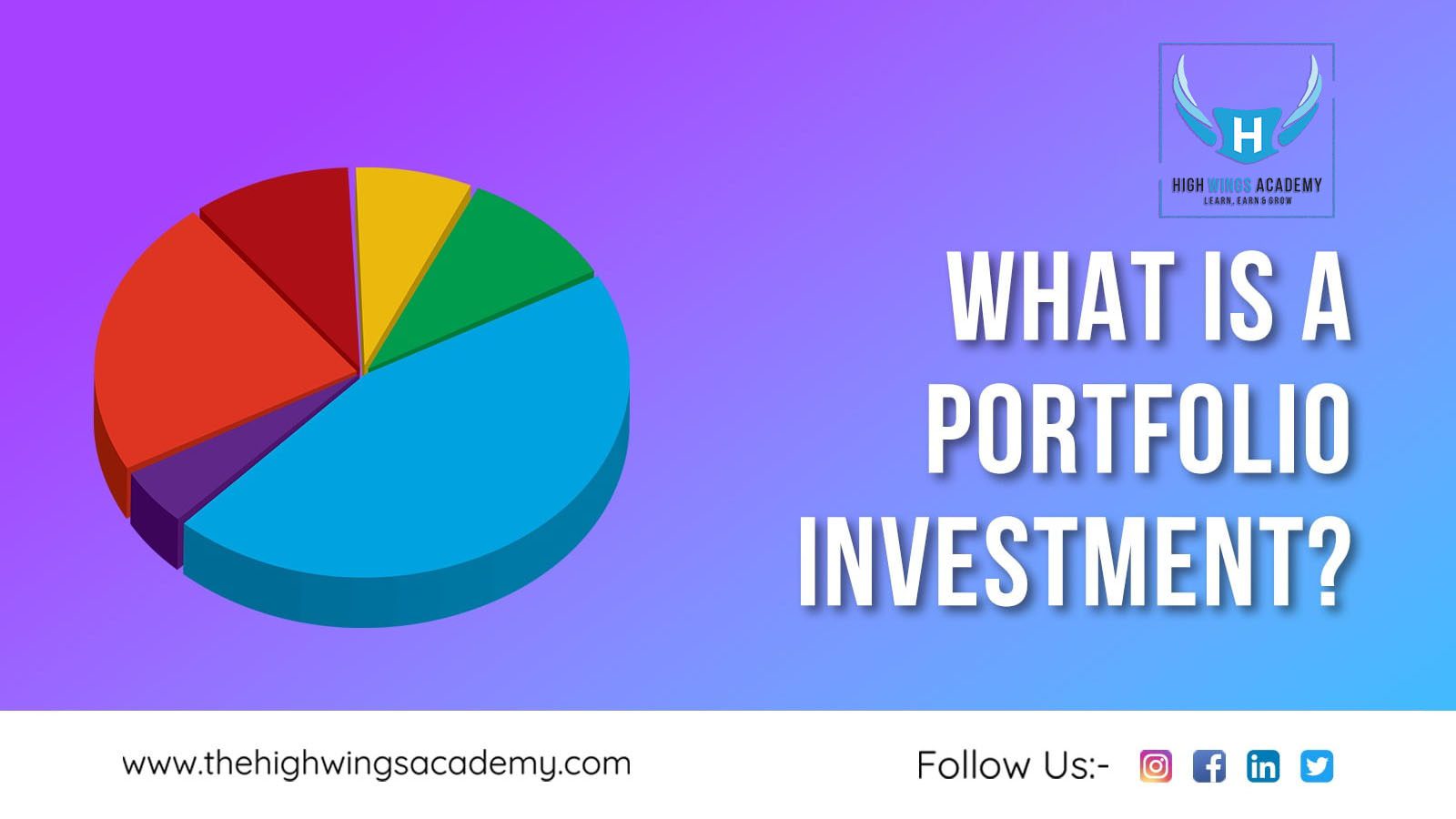Portfolio Investment

What is a Portfolio Investment?
Portfolio Investments are the ideal investment made in a group of assets (equity, debt, mutual funds, derivatives, or even bitcoins). Instead of a single asset, it is done to earn returns commensurate with the investor’s risk profile. Portfolio investments vary from a small segment of one industry to a wide-ranging – entire market.
Like all finance investments, the decision to invest in a portfolio or not is the investor’s decision. But the decision many people make here shows the ultimate importance of portfolios in modern investing. It is one of Jaipur’s Best Stock Market Courses to avail of a better future. Highwings Academy provides a method of customization exactly where it is required.
Important Notes:
- Portfolio investments involve investing in different types of assets, like debt, equity, mutual fund, derivatives, or bitcoin, to achieve returns aligned with the investor’s risk profile. It may range from a small segment of a single industry to a broad spectrum of the entire market.
- The major types of portfolio investments are risk-free, low-risk, medium-risk, and high-risk portfolios.
- Investing in a portfolio is a choice of the investor, just like any other financial investment. Though, many people choose to demonstrate the precise significance of portfolios in contemporary investment.
Everything About Portfolio Investment –
Portfolio Investment is allocating funds into a wide range of financial investments at a time. This may include mutual funds, stocks, bonds, exchange-traded funds (ETFs) or any other type of securities to earn good returns according to risk profile.
During this process, a portfolio is built for an investor, which includes all the different types of assets where money can be invested. This selection of instruments requires a good understanding of each and carefully analyzing the investor’s profile, financial goal, and responsibilities.
Such investment provides corporations and individuals a good exposure to various financial instruments in the market. If the risk-taking power is high, the investor can go for the ones that offer high returns with high risk or vice versa. This type of technical analysis course is not only allowing financial participation but also risk management through diverse holdings with the ability to generate considerable and satisfactory returns.
Types of Portfolio Investments:
The right type of investment gives good returns in proportion to its risk factor. If one invests in a highly risky asset like Bitcoin, they can either get absurdly high returns or expect a straight downfall. But if one invests in treasury bonds, the risk factor is zero, and the returns are also very low. Each financial investor has a risk profile tailored to their specific investments. Here’re some different types of portfolio investments:
Risk-free Portfolio – These are the ones that have investment securities regarding treasury bonds and such where the risk is almost nil, but returns are low.
Low-risk Portfolio – A portfolio with majorly risk-free assets is combined with risk-based securities giving a blend of low risk and minimal return.
Nominal Risk Portfolio – A portfolio with more risk-free securities than the high-risk but fewer risk-based assets.
High-Risk Portfolio – This type of investment includes high-risk securities that benefit with high returns.
The thought that one can attain high returns with low risk is a difficult one to perceive. The free-market dynamics refer it arbitrage – when two similar risk profiles.
Advantages
Below listed are the advantages of portfolio investments –
- An investor’s risk-taking profile can be met using diverse portfolio investments. This cannot be done by looking for a financial investment in an individual’s risk profile.
- Individuals can choose how to diversify their investments via stocks, markets, or investment kinds.
- Assume the investor wishes to handle various points of liquidity. A single stock or bond cannot manage it. However, owning an asset portfolio will allow him to have a consistent source of income or a flow of revenue when needed.
- Dividends are not required to be paid. Some stocks pay dividends, and some are growth stocks. If investors need an investment stand somewhere in between, they can invest in a portfolio that benefits from dividends and growth.
- Investing in such multiple assets requires minimal management. This reduces the transactional cost of investment and helps save additional costs.
Disadvantages
- One of the important reasons for the functionality of the stock market is the information flow it gives under fundamental courses. Information flow is the theory where the money is involved; the decision-making is on the stock price movement helping the company to gauge the market condition. If the stock price rises after a certain decision, it helps the company to judge whether the decision is good or bad.
- If you must research and evaluate the risk rate, the portfolio will yield optimum returns.
- The investor must analyze multiple stocks and form a portfolio to calculate the returns for a certain amount of risk. However, companies available analyze these sorts of portfolio and provide them that does not benefit the user.
- Must have the financial knowledge to invest using a portfolio instead of individual stocks. The relations between individual stocks and markets are difficult to analyze.
Portfolio Investments are typically made by individuals, institutions, or fund seeking to diversify their holdings and spread risk across different asset classes or geographic regions. To learn about this type of investment, join the basic course of High Wings Academy and learn in detail. Avail the opportunities to diversify your holdings, generate returns, and achieve financial objectives.
Recommended Posts

What is Risk Management in the Stock Market?
March 7, 2025

10 Day Trading Strategies for Beginners
January 7, 2025

8 Best Stock Market Books for Beginners in 2025
January 6, 2025


